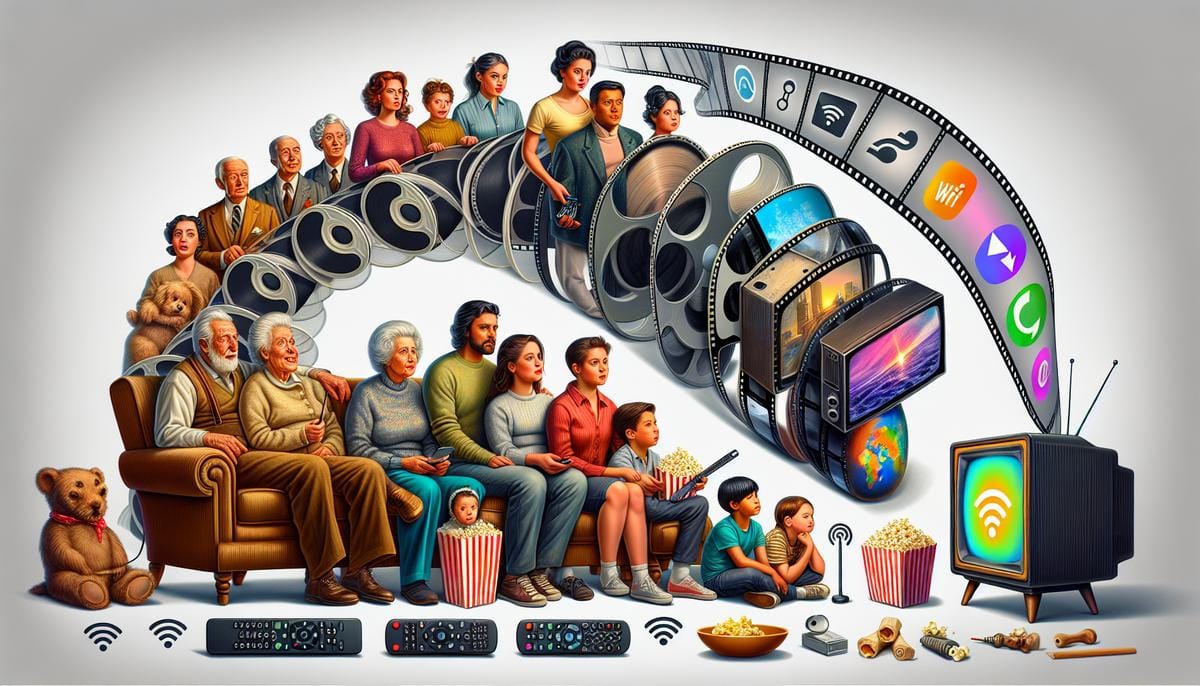The Changing Landscape of TV and Film in the Digital Age

The entertainment industry has undergone a seismic shift in recent years, driven by the rise of digital technology and the proliferation of online streaming platforms. The way we consume TV and film has changed dramatically, with traditional cable and satellite TV giving way to on-demand streaming services like Netflix, Amazon Prime Video, and Disney+. This shift has not only changed the way we watch our favorite shows and movies, but it has also had a profound impact on the way they are made and distributed.
The Rise of Streaming
Streaming services have revolutionized the way we watch TV and film. With a few clicks of a button, we can access a vast library of content from the comfort of our own homes. We no longer have to wait for a specific time to watch a show or movie, nor do we need to rush to the video store to rent a DVD. The convenience and immediacy of streaming have made it the preferred method of consumption for many viewers.
But it's not just the convenience of streaming that has made it so popular. The quality of the content available on these platforms has also played a significant role. Netflix, in particular, has invested heavily in original programming, producing hit shows like Stranger Things, The Crown, and Orange is the New Black. These shows have garnered critical acclaim and have helped to establish Netflix as a legitimate player in the TV and film industry.
The Impact on Traditional TV and Film
The rise of streaming has had a significant impact on traditional TV and film. Cable and satellite TV providers have seen a decline in subscribers as more and more people cut the cord and switch to streaming. This has led to a decrease in advertising revenue for traditional TV networks, forcing them to rethink their business models. Some networks have responded by creating their own streaming platforms, such as NBCUniversal's Peacock and ViacomCBS's Paramount+.
The film industry has also been affected by the rise of streaming. The traditional model of releasing movies in theaters before making them available for home viewing is being challenged by streaming services, which often release their original films directly to their platforms. This has led to tensions with theater chains, who see this as a threat to their business. However, the COVID-19 pandemic has accelerated the shift to digital, with many studios opting to release their films on streaming platforms rather than delaying their release in theaters.
The Role of Social Media
Social media has also played a significant role in the changing landscape of TV and film. Platforms like Twitter and Instagram have become powerful marketing tools for studios and networks, allowing them to reach a global audience and build hype around their shows and movies.
Social media has also given rise to a new generation of content creators. With platforms like YouTube and TikTok, anyone can create and distribute their own videos, bypassing the traditional gatekeepers of the entertainment industry. This has led to the emergence of a new breed of stars, who have built their careers on social media and have a direct connection with their fans.
The Future of TV and Film
The future of TV and film in the digital age is uncertain, but it is clear that the landscape will continue to evolve. As technology advances, we can expect to see new forms of content and new ways of consuming it. Virtual reality, for example, has the potential to revolutionize the way we experience TV and film, allowing us to step inside the worlds of our favorite shows and movies.
One thing is certain: the digital age has changed the way we think about TV and film. The traditional gatekeepers of the entertainment industry are no longer the sole arbiters of what we watch. With the rise of streaming and social media, we have more options and more control over our entertainment than ever before. It's an exciting time to be a viewer, and the possibilities are endless.


